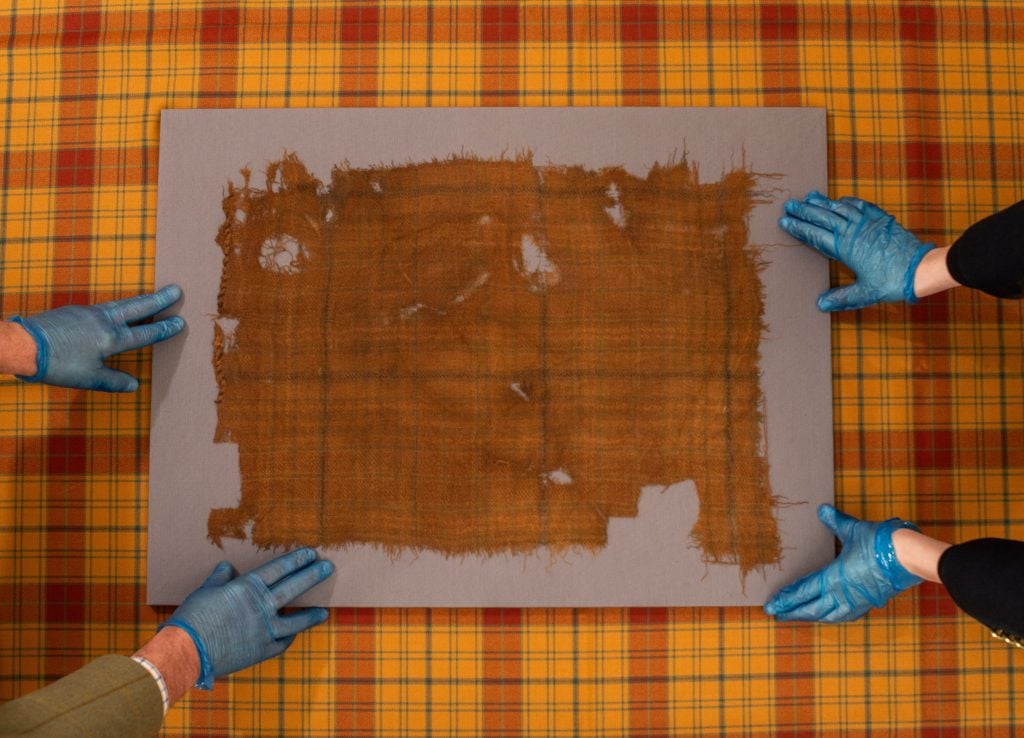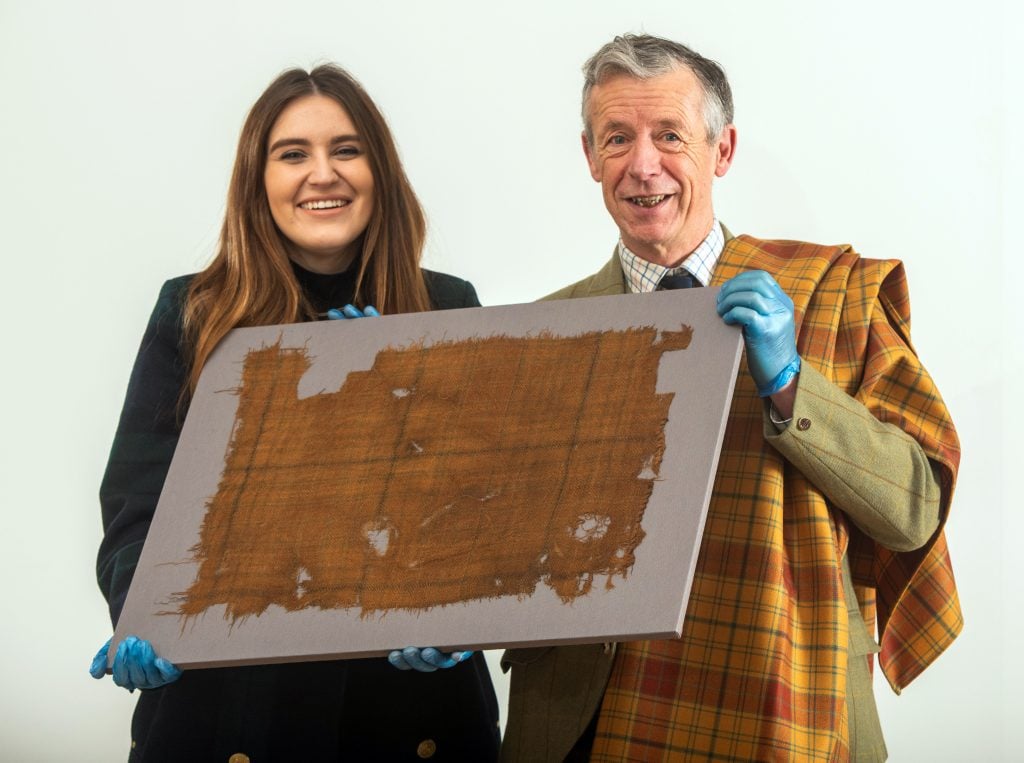Art & Tech
You Can Now Get Your Hands on the World’s Oldest Tartan Design
The historic garment has been recreated and made available to the public.

The historic garment has been recreated and made available to the public.

Richard Whiddington

After laying submerged in a peat bog for more than 500 years, the world’s oldest true tartan has been recreated and made available for consumers.
The Glen Affric tartan, which takes its name from the Highlands area in which it was found in the 1980s, underwent dye analysis and radiocarbon testing last year that dated it to between 1500 and 1600. It was identified as an outdoor working garment by researchers.
The 21-by-17 inch weathered wool fabric was a centerpiece of “Tartan” an exhibition held by V&A Dundee that explored the broad footprint of the textile. It has now been refashioned by the House of Edgar, a Scottish manufacturer and distributor of tartan fabrics, in coordination with a tartan historian. Its first round of cloth sold out in five days.
“The significance of the Glen Affric tartan was unquestionably huge to both the world of tartan and Scottish heritage,” designer Emma Wilkinson said via email. “To think we can now confirm tartan has been around, in a form we still work to today, was completely inspiring.”

Emma Wilkinson, the designer at House of Edgar and Peter MacDonald, Head of Research and Collections at The Scottish Tartans Authority hold the tartan. Photo: V&A Dundee and House of Edgar.
First though, the crisscross pattern, thread count, and colors needed to be deciphered. The testing process, which took more than six months and followed on from initial research conducted by the National Museums of Scotland, confirmed the use of green, red, yellow, and brown, all of which were drawn from organic materials, such as woad and madder.
“The historical piece is not as uniform in design as tartans are today,” Wilkinson said, noting the need to carefully translate the work of the Scottish Tartans Authority into its digital system. “We landed on a symmetrical tartan design, in a thread count derived from the original, and dyed yarns specifically for this tartan to ensure they were absolutely perfect.”
The result is a design that holds true to the fabric’s historic patterns and colors with careful tweaks that ensure it works for contemporary consumers. The tartan is available as a kilt or an accessory with the House of Edgar including the tartan in its “Seventeen Eighty Three Collection,” a reference to the year Alexander Macnaughton, the company’s founder, first set up a small spinning mill to process wool.
Few textiles from the region, particularly of wool, have survived more than a couple of centuries due to the rate at which they degrade in soil. The low oxygen, acidic nature of peat bogs, however, makes for an excellent preservative environment, as evidenced by the numerous bog bodies that have been found across northern Europe.
This makes Glen Affric tartan all the more valuable. “The rich color palette and quality of the yarn, and the weave allow us to assume this cloth held some status in its day,” Wilkinson said.